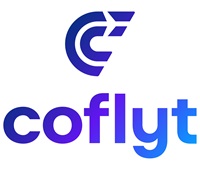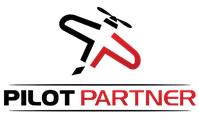If you ask a flying club member what the best part of being in a club is, they will probably say affordable access to aviation or the camaraderie and friendships among club members. Certainly no one would say the administrative task of tracking flight hours, billing members, scheduling maintenance, or even scheduling the aircraft.
The advent of online schedulers was the first step to using technology to simplify flight club operations, and several companies are taking that a few steps further with integrated flying club management tools that can automate just about every aspect of operating a flying club on the administrative end.
Many clubs are familiar with Flight Circle, a product that combines scheduling and invoicing, which has been on the market since 2014. In the past year or two several other companies have begun offering comprehensive management tools that include pilot and aircraft logs, as well as maintenance and squawk tracking, scheduling, and point of sale billing.
This is the first of three articles the Club Connector team is planning that will look at flight club management tools and clubs using products offered by Flight Circle, Pilot Partner, Coflyt and WhenYouFly.
Wrapping your head around all of the features, how each product is set up and what they offer is no small task, so for starters, here is an overview of the different features a club might want to track or manage, as well as a brief description of the four aforementioned companies.
All of these products were developed by pilots based on the needs they saw from their own flying experiences. They are all passionate about developing tools to make it easier for pilots, clubs and flight schools to manage their aircraft and members. They are also continually working to add new features and refine the ones they already have—which means there are several good options to choose from when selecting a management tool for your club.
Management Modules
When talking about what a flight club management tool includes there are a few core areas—each that can have differing levels of complexity and functionality depending on the product you are using. They include:
Here are some questions to ponder when choosing a particular product (which we will feature in future articles).
Website or an App?
One basic question is whether the product is mobile friendly. Does it have an app or a mobile responsive website that is formatted for use on tablets and phones? The benefit of a mobile responsive website is all the features have full functionality from any device, however not all club members should have access to the admin features. An app may be limited to certain functions but is likely to be more user friendly.
Online Scheduler
Maintenance Tracking
Squawk Tracking
Pilot info
Aircraft Info
Invoicing
A look at some of the products
Future articles will take a more in depth look at several products, including Flight Circle, which has been on the market for several years, and three other products that are newer to the comprehensive flight club management tool game – Coflyt, Pilot Partner, and WhenYouFly. There are many other products on the market, and this is not meant to be a comprehensive list, but more to look at some of the newer options that use fresh interfaces and state-of-the-art design methods.
The hardest part of using any of the products is likely to be the initial setup. Each is designed to be user friendly (they hope), they all offer free trial periods as well as training for new customers. The products all have slightly different features or ways of doing things. They all, however, provide scheduling, maintenance tracking, and invoicing functions. In choosing what is best for your club, it’s really just a matter of what features are most important to you, and what product you are most comfortable using. Here is a brief summary of the four products:
Coflyt

Coflyt is a cloud-based aircraft management system that is one of the newest products on the market. It is a management tool comprised of aircraft and pilot scheduling, maintenance tracking, and accounting. One of the things that makes it stand out is that it was designed specifically as a mobile app with the ability to do everything from your phone without needing to go to a web site (although there is a web site that you can use on a computer if you prefer).
Another feature that differentiates it from other management tools is the accounting/payment functions allow administrators to manage and collect flight time payments from members directly within the software without linking to a third-party accounting site such as QuickBooks. Most of its initial customers were aircraft partnerships and it only recently began efforts to expand to flying clubs.
Coflyt centralizes squawk sheets, flight maps, usage statistics, scheduling, payments and communications. “Coflyt is truly useful in what we are seeing in our new social distancing realm,” Relations Manager Kristen Jurn said. “You no longer have to touch papers and pens and things multiple people are touching in the aircraft. It goes beyond somebody having messy handwriting that you cannot read. Coflyt is a natural replacement for that.”
Pricing: It costs $36 a month or $360 a year for two aircraft and unlimited number of members. The Solo Plan is $14 a month or $140 a year for a single user with up to two aircraft. Additional aircraft cost $10 a month each.
New AOPA Network Flying Clubs can get a year free when they sign up for Coflyt.
Website: https://coflyt.com
Flight Circle

When Flight Circle began in early 2014 it was the only modern online scheduler to combine billing and scheduling in a single product. They have been “developing nonstop since then … adding a plethora of tools for managing a club, school, or partnership,” Founder Josh Bowers said. “We’ve added maintenance reminders, squawk tracking, online sales options, and credit card processing.”
Josh has a background in web application and development, and while training for his instrument rating thought he could improve upon his flight school’s online scheduler, the white board used to track maintenance and the single person who had access to billing through QuickBooks.
Flight Circle has a mobile responsive modern design that allows the web site to be optimized for any size mobile devices such as a phone or tablet. There is no need to download an app. An advantage is that all the features work on any device, where an app sometimes has limited features, and therefore a user may have to log into computer, Josh said. It brings maintenance, billing, and scheduling into one system. A logbook feature is being developed and expected later this year.
The included billing functions eliminate much of the needs for an accounting program, like QuickBooks and provide a lot of options such as a recurring charges feature for monthly dues and an autopay feature that can charge a member’s credit card their balance on a set schedule automatically. It can be set up to bill as soon as a reservation is checked in.
Pricing: The cost is $10 a month for each aircraft and unlimited number of users.
Website: https://www.flightcircle.com
Pilot Partner

Pilot Partner started in 1997 as one of the first electronic logbooks, before expanding about two years ago into a more compassing flying club management tool. Its founder, Ken VeArd, has been in flying clubs for the past 10 years serving in a variety of leadership positions, including treasurer and president, and knows first-hand the time and effort it takes to manually track club information.
“The way Pilot Partner works is we’re a full-featured platform. We’re an electronic logbook first that does really amazing stuff for flying club management on top of that. With a single log entry, if you collect the tach start time and end time and the Hobbs start time and end time, you can drive everything a flying club needs for invoicing, budgeting and maintenance, all with one entry,” Ken said. “I didn’t put the scheduled flight as the centerpiece. The logged flight is the centerpiece. That’s the big difference.”
Pilot Partner can pair with QuickBooks online to automate the billing process or with Stripe for credit card processing. An invoice goes out and the member has a link to click on to pay. The payment is automatically logged, updated in Pilot Partner and the money is automatically transferred to the club’s checking account without anyone doing any busy work.
One unique feature is Pilot Partner’s budgeting tool. It can split monthly dues and hourly flight costs into budget categories that the club creates, such as engine reserve, insurance, annual, hangar or tie down fees, etc. While it isn’t an exact dollar amount of what’s in the bank, it’s useful for planning purposes.
Pricing: Pilot Partner has a variety of pricing options. For clubs, it starts at $14.95 a month or $149.50 a year for a single aircraft and unlimited members. If a club has between two and six aircraft, the price is $12.95 a month or $129.50 a year for each aircraft. If the club operates seven or more aircraft, the price drops to $9.95 a month or $99.50 a year per plane.
Website: https://www.pilotpartner.net
WhenYouFly

WhenYouFly was created by David Keen and Daniel Stephens. In 2018 David started a flying club and Daniel was one of the members. To start, members scheduled the plane by texting and emailing one another, which was fine until the day two members thought they had booked the airplane at the same time.
The club wanted a free or cheap calendar program and began by using Team Up, which is basically an online calendar where people could reserve the plane. It worked ok but was very basic. Daniel did some research of the aviation scheduling products on the market and decided he could create something that fit the club’s needs, particularly since he is a software developer.
Over a weekend he built a basic calendar app that the club began to use. Once they had a platform, they began exploring what else they could add. Manually tracking the member’s hours and creating the billing was taking a lot of time and driving David crazy. So Daniel improved the program to do flight tracking/logging. Once the information was entered in the system it would automatically tally up everybody’s hours and bill people’s credit cards.
In early 2019, Daniel and David co-founded StarBird Technologies to provide their WhenYouFly service to the aviation community. They have a full-time team of software developers working on bringing new functionality to the system. They release a new version with updates and bug fixes about every two weeks.
Pricing: “WhenyouFly Core is our scheduling and flight logging system. This full-function version of our software is completely free for AOPA Network Flying Clubs, single users and fractional ownership users,” said co-founder Daniel Stephens. The maintenance tracker and billing are modules that can be added on for $4 a month each. The app also costs $4 a month. So to get all the functionality and features, could cost up to $12 a month.
Website: https://whenyoufly.com